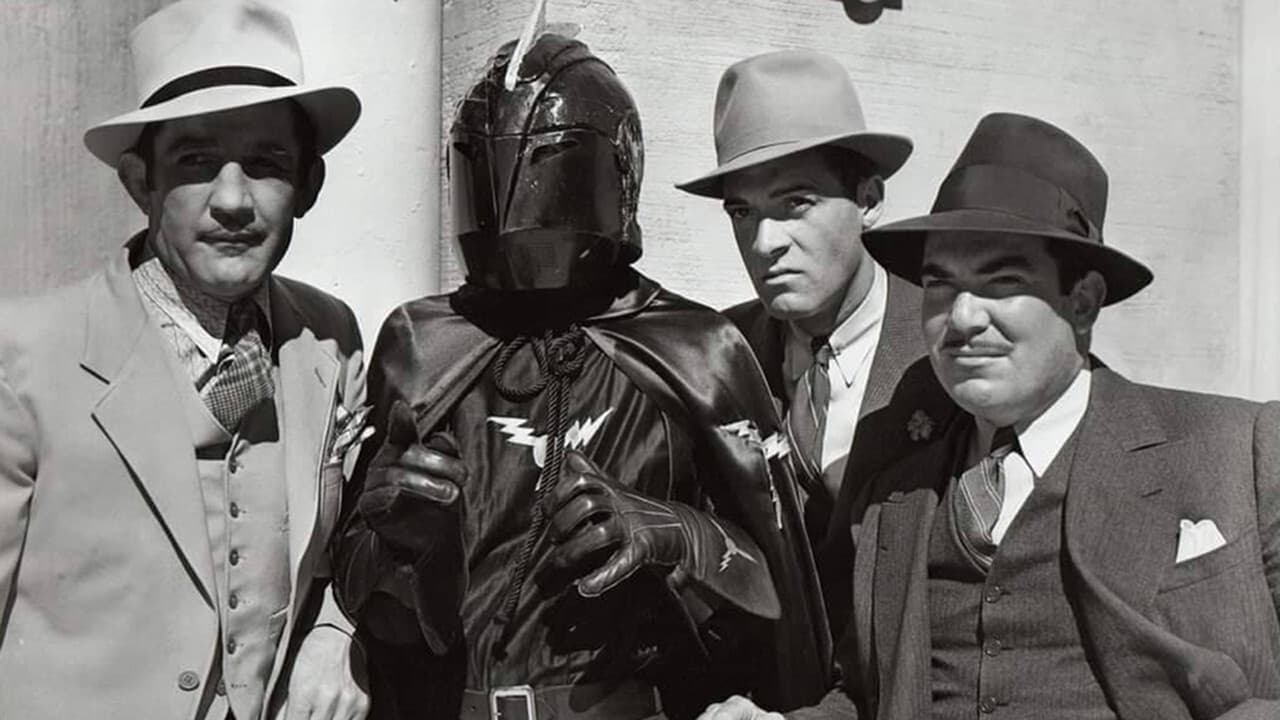

The greatest movie ever made..!
... View MoreThat was an excellent one.
... View MoreThis movie was so-so. It had it's moments, but wasn't the greatest.
... View MoreAt first rather annoying in its heavy emphasis on reenactments, this movie ultimately proves fascinating, simply because the complicated, highly dramatic tale it tells still almost defies belief.
... View MoreNOTES: Dedicated to "The United States Marines — vigilant guardians of our flag at home and abroad."Shot in only 20 days at a negative cost of only $92,569, this one ranks as Republic's least expensive serial bar only "The Vigilantes Are Coming". Two cost-cutting episodes, 7 and 11, which reprized previous material, helped keep the budget $2,087 below its budgeted estimate. Shooting started on 10 March 1938 and finished on 29 March 1938.VIEWER'S GUIDE: Suitable for all.COMMENT: Plenty of excitement in this far-fetched yet nonetheless vastly entertaining adventure serial. The directors get the dialogue clichés delivered as fast as possible so they can concentrate on some splendid action footage. Particularly stunning is a motorcycle chase after the villains' roadster which even background projection and a lame jump cannot spoil. Some of the compositions are also handled with photographic style, notably an interrogation sequence with truth serum. The special effects are not bad at all and there is an exciting sequence in which the heroes tangle with asbestos-clad henchmen. One of the editors shows a commendable interest in trick wipes. Indeed, production values, including some fine photography by William Nobles, are generally good. On the other hand, the acting is entertainingly abysmal, though Miss Stewart makes an attractive heroine. At least one of the episodes ("Tides of Trickery") ends on a novel note, even though the hero's escape is pretty lame. The music direction is of a higher standard than usual.A cleverly cut-down feature version was released to TV in 1966 under the title "Torpedo of Doom".
... View MoreThis serial was first syndicated in the 1950's when I viewed it on 3 consecutive Saturdays. The hero is Lee Powell, but Herman "Bruce Bennett" Brix was familiar from the Tarzan serial made later. These Marines get a real workout on land, sea, and air, mainly because the entire USMC seems to consist of about two dozen lightly-armed extras. Stock footage of every imaginable type is the major drawback, plus the inconsistency in WHEN the heroes or bad guys have GUNS or not.(This makes for frequent lengthy fistfights.) Also, viewing it as an adult, they really understated the distance between California and Hawaii : three or four hours by SEAPLANE? The only major plot hole is the stereotypical revelation of the villain. He surely knew that his secret was out, as it's unlikely the girl wouldn't have already told her rescuers. But he tries to kill her anyway? As my long-time favorite punchline goes, "The Lightning's REAL NAME is..." (ZZZZTTT!) How do you spell 'Zzzt'?
... View MoreThis is one of the serials dedicated to the military by Republic Pictures, SOS Coastguard being another.Though providing serial fans with plenty of action, this 1938 chapter play is composed of excessive stock footage, unusual for a serial made in the late thirties. Robinson Carusoe of Clipper Island and the first Dick Tracy are two serials that provide scenes and cliffhangers for Fighting Devildogs. Adding to that ,news reel footage, the viewer can easily see that the studio really cut corners. That being said, it remains a fast moving 12 chapters with Lee Powell and Herman Brix,aka Bruce Bennett, doing good work as the leads. William Witney and John English provide stellar direction, along with Alberto Columbo's atmospheric musical score. This serial also provides a memorable super nemesis known as The Lightning.The stunts are excellent and up to Republic standards, but the pace of the serial is often erratic. Should have been better considering the personnel involved. Still , this serial deserves a place in a serial fans collection.
... View MoreIt was Republic's practice from 1938-1945 to release four serials a year, two 15 chapter deluxe serials, and two 12 chapter streamlined serials. The former were often the important properties like Dick Tracy and the Lone Ranger, and they spent more money on them. this practice was most evident in 1938 where the 12 chapter serials, HAWK OF THE WILDERNESS and THE FIGHTING DEVIL DOGS were two of Republic's lowest budgeted serials. FIGHTING DEVIL DOGS has shortcuts everywhere, stock footage, location work consisting of standing in front of a process screen, and two economy chapters where the heroes sit around and discuss what happened earlier and so footage can be reused. That is too bad, because it is one of Republic's most entertaining serials. The villain, the Lightning was one of the most impressive masked heavies in serials. He attempted to conquer the world with electrical weapons. One, an Aeriel torpedo that would give off a huge electrical charge that would electrocute anyone nearby was extremely well done, but a pistol that would shoot electricity was done by scratching a jagged line on the negative. Aiding the heroes was a scientist, Warfield, and in some of the strangest writing in serials, the three suspects were Warfield's butler, gardener, and lab assistant. Even thought it isn't difficult to guess the Lightning's identity, the writers had more clever red herrings than any of their other mystery serials. The butler and Gardener were always caught eavesdropping, when the Lightning would travel to his island hideout, a suspect would also leave on an emergency trip. Other pluses are the two leads, Herman Brix and Lee Powell, who are an effective team. Even though Powell is the main hero, Brix is every bit his equal. What really lifts FIGHTING DEVIL DOGS is it's powerful musical score, certainly one of Republic's most memorable. I recommend this serial highly to all fans of adventure.
... View More